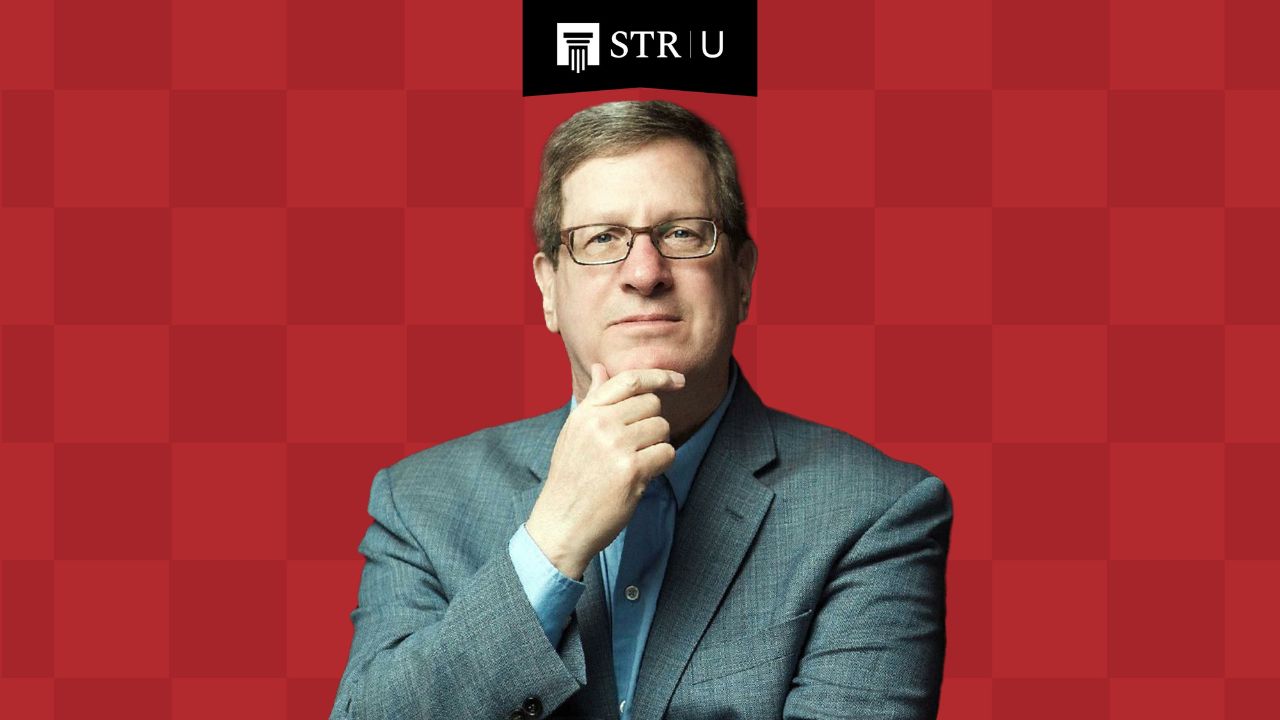In this excerpt from our Stand to Reason University course “The Case for a Creator,” Lee Strobel investigates the fine-tuning of the universe and shares how this led him to believe there is a purposeful design behind the universe.
(Presented in partnership with Illustra Media and the John 10:10 Project.)
Transcript
Narrator: Lee Strobel’s journey through a universe finely tuned for life inevitably led him home to the blue jewel of our solar system, the planet Earth. There, he encountered another array of critically balanced conditions essential to human existence.
Strobel: When I was an atheist, I saw planet Earth as being one of probably billions of planets just like it all over the universe. I saw our sun as being an average, undistinguished type of sun. I figured as I looked up at the stars at night that there must be millions and millions of advanced civilizations out there. I just thought there was an ordinariness to our situation. This line of reasoning was totally consistent with my atheistic worldview, but what I learned later is it is not consistent with what science is revealing about the Earth.
Narrator: Strobel’s investigation caused him to consider the many conditions necessary for a life-sustaining planet. In the process, he was introduced to the science of astrobiology and astronomer Guillermo Gonzalez.
Gonzalez: I’m an astrobiologist, and what motivates me is just to examine the conditions necessary for life and look elsewhere in the universe to see if those conditions are met anywhere else. The answer could be yes, and the answer could be no, and either answer is interesting.
Narrator: For more than a decade, Guillermo Gonzalez has researched the characteristics of a planet required to support complex life. Estimates vary, but a current list of these factors would number at least 20 and include an oxygen-rich atmosphere, liquid water and large continental landmasses, a home star of the right temperature and mass, an orbital path that is neither too far nor too close to the home star, a moon large enough to stabilize the tilt of the planet’s axis and the movement of its tides, a magnetic field strong enough to deflect the sun’s radiation, and a position in the relatively narrow habitable region of a spiral galaxy.
Gonzalez: All these factors have to be met at one place and time in the galaxy if you’re going to have a planet as habitable as the Earth, which you need for complex and even technological life.
Narrator: Theorists have attempted to calculate the odds of all the necessary factors for life appearing at the same time on the same planet. A conservative estimate is one chance in ten to the negative fifteenth—or one one-thousandth of one one-trillionth. On those terms, even when compared to the billions of suns and possible planets in our Milky Way galaxy, the probability of even a single habitable world appears unlikely.
Gonzalez: There are many probabilistic resources in the galaxy, but on the other side of the coin are all these factors that you need… that you have to get just right in order to have just one habitable planet like the Earth. That leads me to conclude that, yes, we’re rare in the galaxy.
Narrator: Gonzalez’s study of the Earth’s habitability led him and colleague Jay Richards to expand the scope of their research. They began to examine how a life-sustaining planet like Earth may also give its human inhabitants access to the mysteries of the universe.
Richards: I don’t think there has ever been a time in the history of the human race in which at least some people haven’t contemplated these questions. We ask why we can see distant galaxies millions of light-years away in the universe, why we can postulate what’s going on inside atoms or inside black holes, and why we are able to discover things about the universe to answer questions about its age. Most scientific discoveries that we’re able to make can’t be explained in terms of the survival of the fittest of our distant ancestors. Not only our ability to do science, but the openness of the natural world to science just completely outstrips the sort of reductionist and Darwinian explanations that we’re used to.
Narrator: In response to this evidence, Richards and Gonzalez have argued that our ability to make scientific discoveries is no fluke or accident. Instead, it points to an underlying purpose behind the universe. It is actually designed for discovery.
Richards: Guillermo Gonzalez and I spent several years pursuing a hypothesis that those rare things that life needs in a planetary environment, those things that make a planet habitable, also set up the best set of conditions overall for scientific discovery.
Narrator: There are many examples of this correlation, including our planet’s oxygen-rich atmosphere, both a critical requirement for our survival and a transparent window that allows us to explore the distant universe. The earth’s precise distance from the sun and the size of its moon and home star. These factors not only control our planet’s temperature, axial tilt, and the movement of its tides; they also ensure perfect solar eclipses, phenomena that have provided scientists with invaluable data about the composition of stars and the properties of light and our location in the Milky Way. The earth is positioned between two spiral arms within a relatively small region where life is possible. As a result, we enjoy an excellent platform for clear, unimpeded views of our galaxy and the rest of the cosmos.
Strobel: I think God intentionally created a habitat for us that allows us to see him through the creation that he has left behind, and this habitat is conducive for us to do scientific research. It didn’t have to be that way, but it is. Why? Because I believe that by doing science, we find God.

